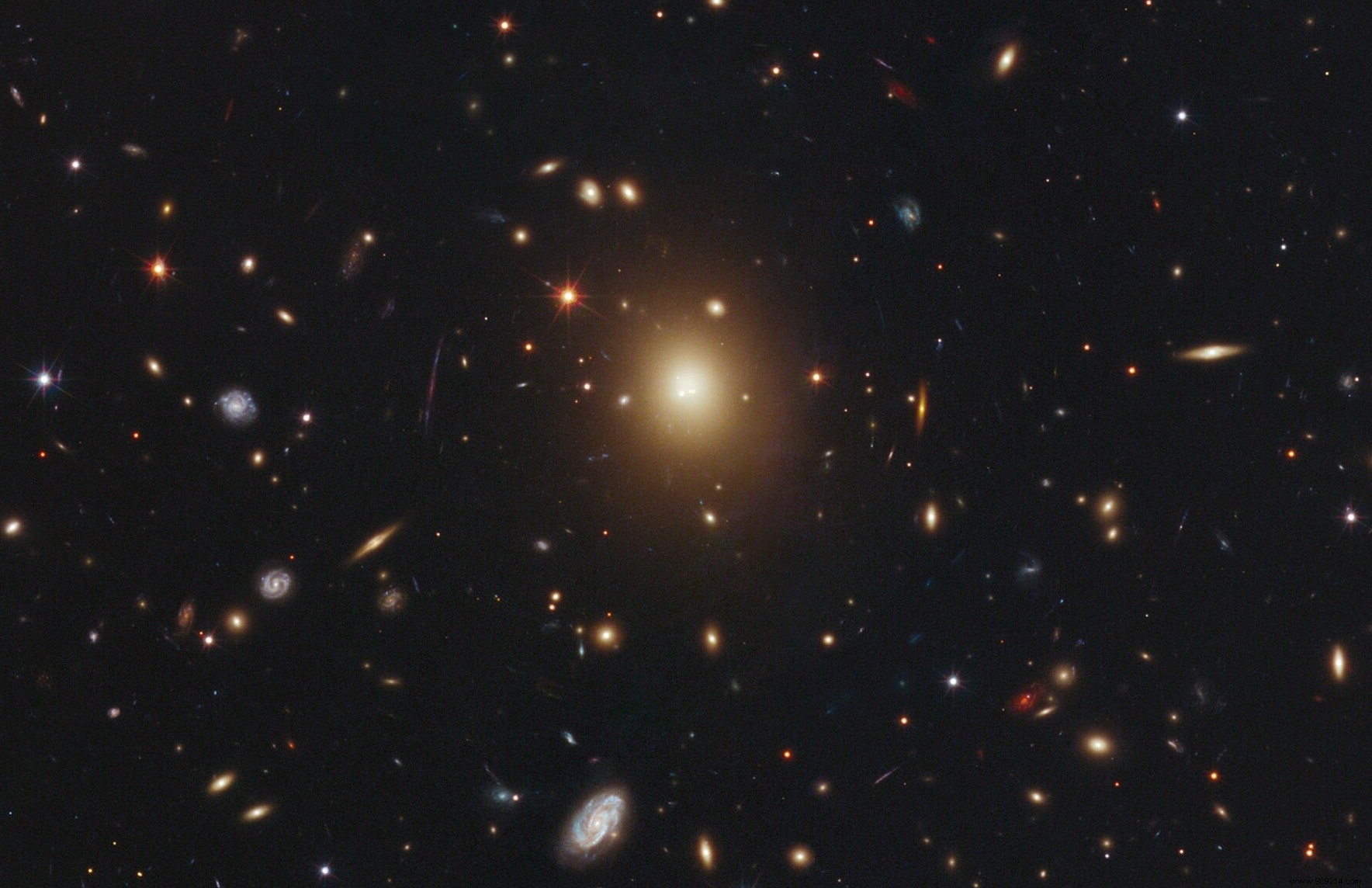According to a team of researchers, primordial black holes created in the first moments after the Big Bang could explain all the dark matter in the Universe. It was also one of Stephen Hawking's most controversial theories. The James Webb Telescope may soon be able to test it.
According to the theory of general relativity, spacetime is bent by mass. And the more massive an object, the more the space-time will be curved. Thus, a black hole has such a high density that it gives rise to an extremely deep gravitational well capable of tearing this space-time apart. The curvature generated is so strong that nothing can come out of it, not even photons.
Dark matter is a still hypothetical form of matter invoked in order to account for certain astrophysical observations, in particular estimates of the mass of galaxies. This matter, which does not interact with "normal" matter and therefore cannot be directly observed by telescopes, acts as something like the "invisible scaffolding" on which galaxies form and grow.
Until now, these two concepts were always separated , but could black holes and dark matter be one and the same?
It is indeed the implication of a new model of the early Universe created by astrophysicists from Yale, the University of Miami and the Space Agency European Union (ESA). This model echoes a theory first proposed in the 1970s by physicists Stephen Hawking and Bernard Carr.
At the time, the two researchers argued that during the first split second after the Big Bang, tiny fluctuations in the density of the universe may have created a hilly landscape with "bumpy" regions offering additional mass. These lumpy areas would then have collapsed into black holes. They then proposed that dark matter could be made up of black holes formed in the first moments of the Big Bang.
While the theory has long remained controversial, a team of researchers suggests that with a slight modification, it could finally have real explanatory power. They postulate that if most primordial black holes were born with a size of about 1.4 times the mass of Earth's sun, they could potentially represent all the dark matter currently recorded in the Universe .

The existence of such a large population of primordial black holes could also easily explain the existence of huge supermassive black holes hundreds of millions of times more massive than the Sun observed in the early Universe.
Before you get a black hole, you normally have to go through the "massive star" box. At the end of their life, these objects explode in a supernova before ending their days in a black hole. However, we observe the presence of several of these cosmic ogres only a few hundred million years after the creation of the Universe. However, astronomers believe that the "seeds" left by the first stars are not large enough to give rise to such objects. So the question is how they came to be.
What this new theory tells us is that primordial black holes, if they exist, could well be the seeds from which all these famous holes supermassive black formed first . "What I personally find super exciting about this idea is how it elegantly unifies two really difficult problems I'm working on:probing the nature of dark matter and the formation and growth of supermassive black holes “, points out Priyamvada Natarajan, of Yale University.
Finally, the presence of primordial black holes could also solve another cosmological conundrum:excess infrared radiation synchronized with X-ray radiation detected from distant, dark sources scattered throughout the universe. According to the study, these possible growing primordial black holes would exhibit exactly the same radiation signature.

Coming up with an interesting idea is essential, but being able to test it is even better. This may be the case here. Indeed, the existence of these primordial black holes could be proved or disproven in the near future thanks to the James Webb Telescope, responsible for probing the presence of developed galaxies in the early Universe. If dark matter is made up of primordial black holes, then more stars and galaxies would have formed around it at that time. ESA's Laser Interferometer Space Antenna (LISA) mission, announced for the 2030s, will also be able to pick up gravitational wave signals from the first mergers of primordial black holes, if any. /P>